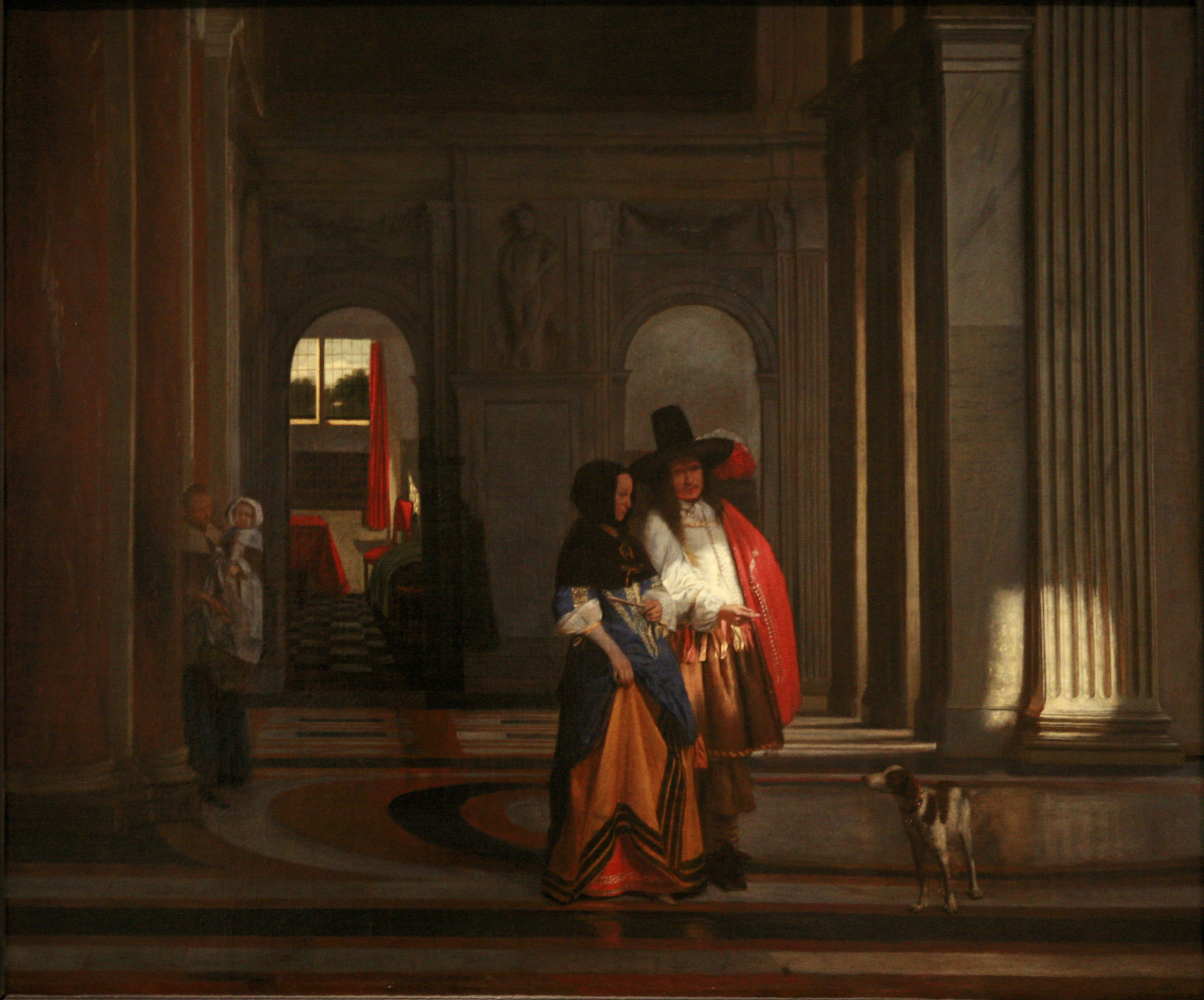|
The Courtyard Of A House In Delft
''The Courtyard of a House in Delft'' is a 1658 painting in the National Gallery, London made in the Dutch Golden Age by Pieter de Hooch. The painting portrays domestic architecture typical of de Hooch's middle period; the details and textures of the building and courtyard are given as much or more of the artist's attention as the people. It is signed and dated to the left on the archway "P.D.H. / A 1658". The scene is divided into two pieces. To the left, an archway of brick and stone leads from a paved courtyard a passageway though a house, where a woman dressed in black and red stands looking away to the street beyond. A stone tablet above the doorway was originally over the entrance of the in Delft. It reads, in Dutch: "Dit is in sint hieronimus daelle / wildt v tot pacientie en lydtsaemheijt begeeven / vvand wij muetten eerst daellen / willen wy worden verheeven 1614" (in English: "This is in Saint Jerome's dale / please be patient and meek / for we must first descend ... [...More Info...] [...Related Items...] OR: [Wikipedia] [Google] [Baidu] |
Pieter De Hooch
Pieter de Hooch (, also spelled "Hoogh" or "Hooghe"; 20 December 1629 (baptized) – 24 March 1684 (buried)) was a Dutch Golden Age painter famous for his genre works of quiet domestic scenes with an open doorway. He was a contemporary of Jan Vermeer in the Delft Guild of St. Luke, with whom his work shares themes and style. Biography De Hooch was born in Rotterdam to Hendrick Hendricksz de Hooch, a bricklayer, and Annetge Pieters, a midwife. He was the eldest of five children and outlived all of his siblings. Little is known of his early life and most archival evidence suggests he worked in Rotterdam, Delft, and Amsterdam. According to his first biographer Arnold Houbraken, he studied art in Haarlem under the landscape painter Nicolaes Berchem at the same time as Jacob Ochtervelt and was known for his "kamergezichten" or "room-views" with ladies and gentlemen in conversation. [...More Info...] [...Related Items...] OR: [Wikipedia] [Google] [Baidu] |
John Smith (art Historian)
John Smith (1781–1855) was a 19th-century British art dealer who developed the concept of the catalogue raisonné. Smith was born in London. He began dealing in art as a framemaker, specializing in wood-carving and gilding.Review of book about Smith on He became an art dealer and art consultant known for his "reasoned catalog" of painters that he wrote in 8 volumes and sold by subscription to his art clients during the years 1829 to 1837, and to which he added a 9th volume as a supplement in 1842. Sources * Volume 1 (1829): , Pieter van Slingelant, |
Paintings By Pieter De Hooch
Painting is the practice of applying paint, pigment, color or other medium to a solid surface (called the "matrix" or "support"). The medium is commonly applied to the base with a brush, but other implements, such as knives, sponges, and airbrushes, can be used. In art, the term ''painting ''describes both the act and the result of the action (the final work is called "a painting"). The support for paintings includes such surfaces as walls, paper, canvas, wood, glass, lacquer, pottery, leaf, copper and concrete, and the painting may incorporate multiple other materials, including sand, clay, paper, plaster, gold leaf, and even whole objects. Painting is an important form in the visual arts, bringing in elements such as drawing, composition, gesture (as in gestural painting), narration (as in narrative art), and abstraction (as in abstract art). Paintings can be naturalistic and representational (as in still life and landscape painting), photographic, abstract, narrative, sy ... [...More Info...] [...Related Items...] OR: [Wikipedia] [Google] [Baidu] |


